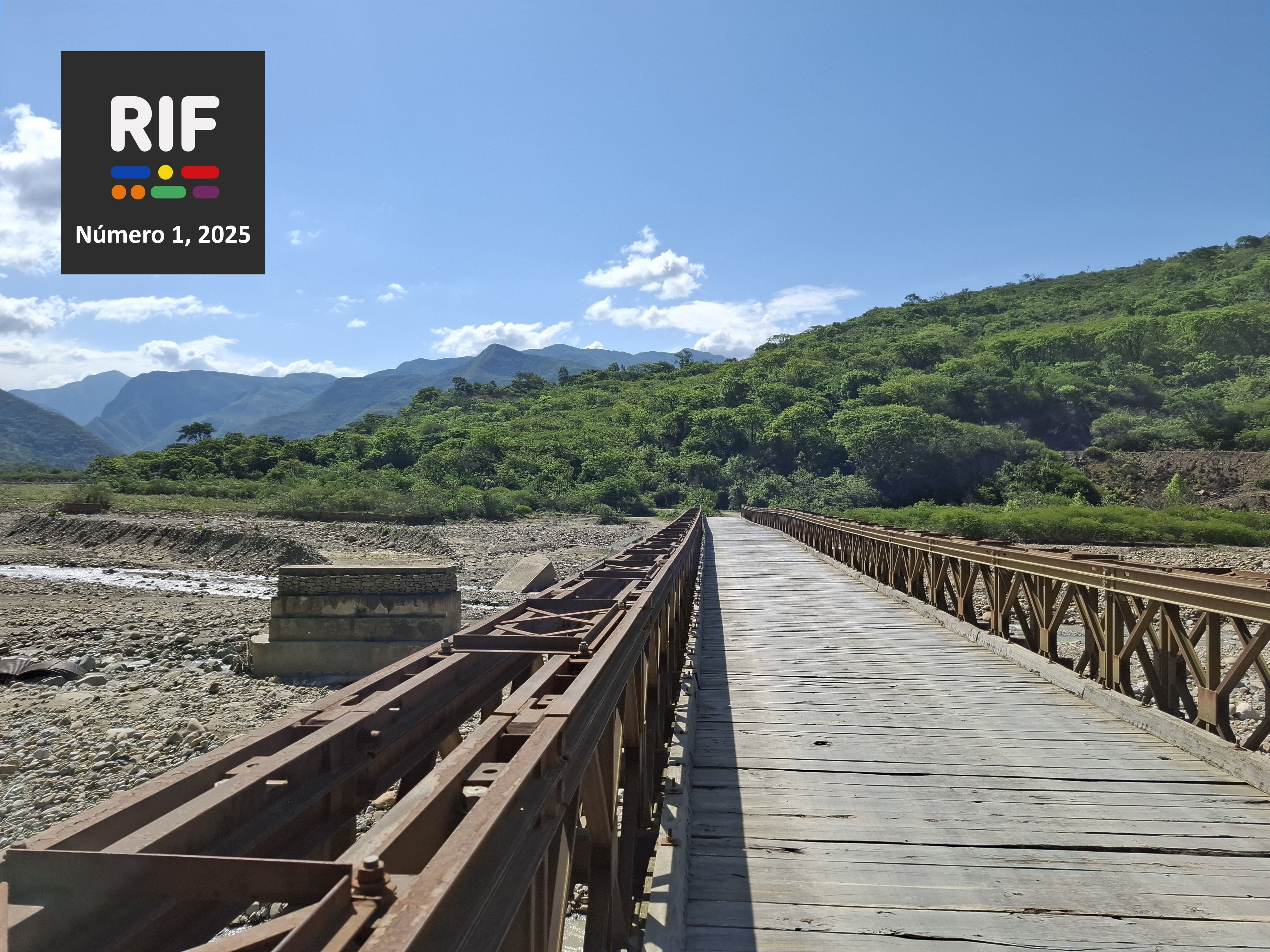45 anos de estudos sobre fronteiras
DOI:
https://doi.org/10.34096/rif.2025.24Palavras-chave:
Estudos sobre fronteiras, Limites, Regiões de fronteira, Disciplinas acadêmicas, Construção teórica, MétodosResumo
Este ensaio faz um balanço do trabalho realizado até o momento nos estudos sobre fronteiras e analisa alguns de seus desafios futuros. Ele argumenta que, quase meio século após o surgimento dos estudos sobre fronteiras nas ciências sociais, ainda há muito a ser feito para transformar nosso campo em uma disciplina acadêmica. À medida que nos aproximamos de uma meia-idade metafórica, já é hora de os estudiosos das fronteiras investirem uma parte substancial de suas energias no desenvolvimento de quadros teóricos e metodológicos comuns, para compreender melhor como evoluem as fronteiras, as regiões de fronteira e seus habitantes. Fazer isso promete tornar nosso trabalho mais relevante para os diversos atores acadêmicos e da sociedade civil para quem as fronteiras e as regiões de fronteira continuam sendo um tema de crucial importância, mas frequentemente pouco examinado.
Downloads
Referências
Amilhat-Szary, A. L. (2020). Geopolitique des frontieres. D´ecouper la terre, imposer une vision du monde. París: Le Cavalier Bleu.
Brambilla, C. (2015). Exploring the critical potential of the borderscapes concept. Geopolitics, 20(1), 14-34.
Brambilla, C. y Jones, R. (2020). Rethinking borders, violence, and conflict: From sovereign power to borderscapes as sites of struggles. Environment and Planning D. Society and Space, 38(2), 287-305.
Brunet-Jailly, E. (2005). Theorizing borders: An interdisciplinary perspective. Geopolitics, 10(4), 633-649.
Johnson, C.; Jones, R.; Paasi, A.; Amoore, L.; Mountz, A.; Salter, M. y Rumford, C. (2011). Interventions on rethinking ‘the border’ in border studies. Political Geography, 30(2), 61-69.
Krishnan, A. (2009). What are academic disciplines? Some observations on the disciplinarity vs. interdisciplinarity debate. NCRM Working Paper 3.
Makkonen, T. y Williams, A. M. (2016). Border region studies: The structure of an ‘offbeat’ field of regional studies. Regional Studies, Regional Science, 3(1), 355-367.
Newman, D. (2006a). Borders and bordering: Towards an interdisciplinary dialogue. European Journal of Social Theory, 9(2), 171-186.
Newman, D. (2006b). The lines that continue to separate us: Borders in our borderless world. Progress in Human Geography, 30(2), 143-161.
Newman, D. y Paasi, A. (1998). Fences and neighbours in the postmodern world: Boundary narratives in political geography. Progress in Human Geography, 22(2), 186-207.
Nugent, P. (2019). Boundaries, communities and state-making in West Africa: The centrality of the margins. Reino Unido: Cambridge University Press.
Paasi, A.; Ferdoush, M. A.; Jones, R.; Murphy, A. B.; Agnew, J.; Ochoa Espejo, P. y Fall, J. J. (2022). Locating the territoriality of territory in border studies. Political Geography, 95(1).
Parker, N. y Vaughan-Williams, N. (2009). Lines in the sand? Towards an agenda for critical border studies. Geopolitics, 14(3), 582-587.
Rumford, C. (2012). Towards a multiperspectival study of borders. Geopolitics, 17(4), 887-902.
Salter, M. B. (2012). Theory of the: The suture and critical border studies. Geopolitics, 17 (4), 734-755.
Scott, J. W. (2020). A research agenda for border studies. Reino Unido: Edward Elgar.
Sohn, C. (2014). Modelling cross-border integration: The role of borders as a resource. Geopolitics, 19(3), 587-608.
Van Houtum, H. y Van Naerssen, T. (2002). Bordering, ordering and othering. Tijdschrift voor Economische en Sociale Geografie, 93(2), 125-136.
Walther, O.; Klatt, M. y Boedeltje, F. (2021). Mapping international co-authorship networks in Border Studies (1986–2018). Journal of Borderlands Studies, 36(4), 653-674.
Zhukov, Y. M.; Davenport, C. y Kostyuk, N. (2019). Introducing xSub: A new portal for cross-national data on subnational violence. Journal of Peace Research, 56(4), 604-614.
Downloads
Publicado
Edição
Seção
Licença
Copyright (c) 2023 ELSEVIER

Este trabalho está licenciado sob uma licença Creative Commons Attribution-NonCommercial-ShareAlike 4.0 International License.






